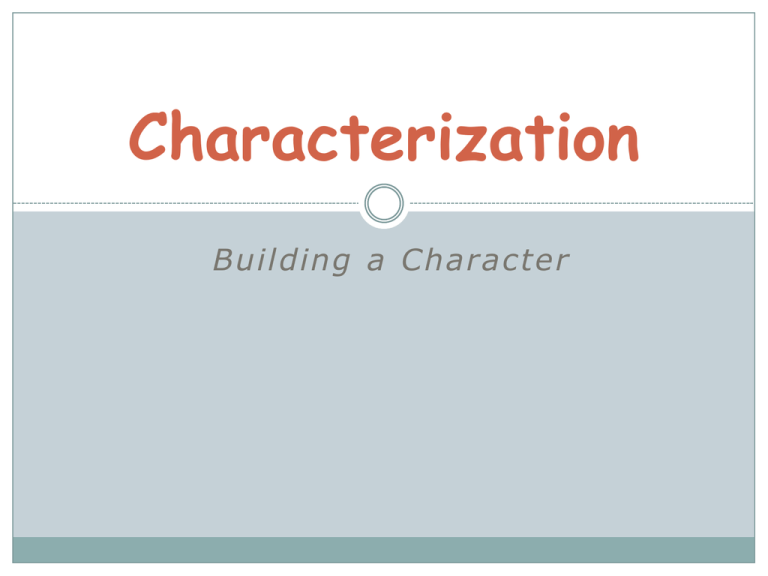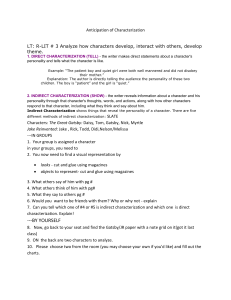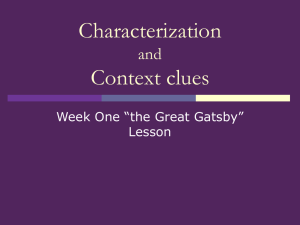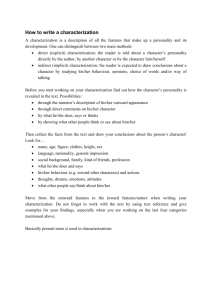Characterization - Demarest School
advertisement

Characterization Building a Character What is characterization? Characterization is the way we learn about a character and how we create and describe a character base on what the playwright has provided. There are two types of characterization: Direct characterization Indirect characterization Direct Characterization Direct characterization. The character him/herself or another character in the play tells the audience what the character is like. From “Of Mice and Men”: Candy: "I ain't much good with on'y one hand. I lost my hand right here on this ranch. That's why they gave me a job swampin'....I ain't much good, but I could cook and tend to the chickens and hoe the garden some. How'd that be?" Presenting information about a character directly through descriptions in dialogue or stage directions/descriptions. Indirect characterization Indirect characterization used to show (not tell) things that reveal the personality of a character: The The The The The character’s speech, character’s thoughts, effect the character has on others, character’s actions, physical “looks” of the character Indirect characterization Infer the qualities and characteristics of the character – not directly told. It is more like the way we learn about people in real life because we naturally observe people and characters in films, etc. to figure out his/her personality. Remember the word, STEAL… “STEAL” The letters in the word “STEAL” can help you remember the five different ways playwrights use indirect characterization to create characters: “S” stands for SPEECH. What the character says and their unique way to say it. This brings out the personality of characters “STEAL” “T” stands for THOUGHTS. What we learn about the character through his/her private thoughts. “STEAL” “E” stands for EFFECT ON OTHERS What we learn about the character by how other characters feel or act around the him/her. “STEAL” “A” stands for ACTIONS. What does the character do? How does the character behave? “STEAL” “L” stands for LOOKS. What does the character look like? How does the character dress? Direct or Indirect? Look at this example and figure out if the if this is direct or indirect characterization: From Pygmalion: (Henry Higgins talking to Colonel Pickering) "Here I am, a shy, diffident sort of man. I've never been able to feel really grown-up and tremendous, like other chaps." Direct or Indirect? Look at this example and figure out if this is direct or indirect characterization to help us figure out the personality of the characters: From The Outsiders: (Dally talking with Johnny) “Johnny, you don't know what a few months in jail can do to you, man. You get mean in jail, I just don't wanna see that happen to you like it happened to me, man. Understand?”






